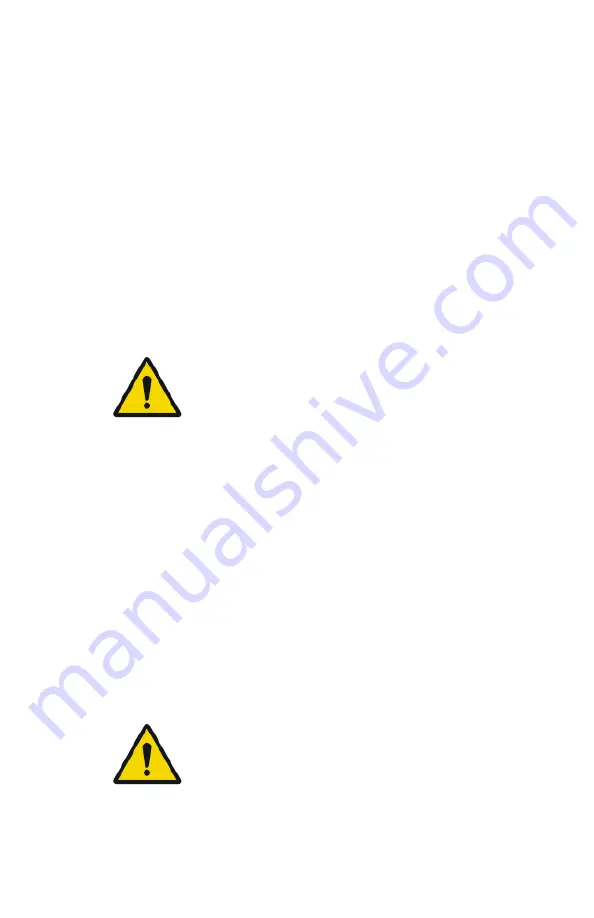
4000 cd/m² (4500 and 6500 °K). Use a magnifying glass and use
shutters to collimate. Make sure the ambient light is low.
1.
First, print out the QC test image.
2.
Check the QC test image visually for artifacts: no significant disturbing
artifacts should be visible.
3.
Check the spatial resolution in each of the three circles (refer to item 1, 2
and 3 on the
‘QC test image’
). Within each circle there are three groups,
each consisting of five dots. All five dots of each group must be visible with
a magnifying glass. The smallest cluster of 5 dots is only visible if the
viewing conditions are good.
4.
Check the Low Contrast Visibility at both the high (100 / 95%) and low
end (0 / 5%) of the density scale. You should be able to see the circle in
the square (refer to item 1 on the
‘QC test image’
) and the upper circle
(refer to item 2 on the
‘QC test image’
).
5.
Record these values on Chart 3 (‘Artifacts and Spatial Resolution Control
Chart’).
WARNING:
In case of significant artifacts, insufficient spatial resolution
or failure of any other recommended QC tests, the cause of
the problem must be identified, and corrective action must
be taken before the printer can be used for any further
clinical imaging.
Related Links
on page 102
on page 95
Preventive maintenance schedule
on page 120
Performing the annual QC tests
Geometric Consistency Test
To be able to notice fluctuations in image size and aspect ratio, you must
perform this procedure once a year.
1.
First, perform the daily test.
2.
Use the QC test image of the weekly test and measure the dimensions A
and B of the geometric square.
WARNING:
Make sure to measure distance A from the left edge of the
left line to the right edge of the right line and distance B
from the upper edge of the upper line to the lower edge of
the lower line.
We strongly recommend using a 30 cm (12-inch) machinist
scale with 0.5 mm divisions (1/64 inch).
104
| Dry 2.4M | Advanced Operation (key-operator mode)
2652B EN 20210601 1655
















































